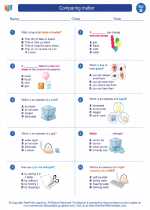Crystalline Structure
Crystalline structure refers to the arrangement of atoms, ions, or molecules in a solid substance. In a crystalline structure, the particles are arranged in a specific, repeating pattern that extends in three dimensions. This regular arrangement gives crystalline substances their characteristic geometric shapes and properties.
Characteristics of Crystalline Structure
- Orderly Arrangement: Atoms, ions, or molecules are arranged in a highly ordered, repeating pattern.
- Definite Melting Point: Crystalline substances have a distinct melting point at which the ordered arrangement breaks down.
- Distinctive Shapes: Crystals exhibit well-defined geometric shapes due to the regular arrangement of particles.
- Anisotropy: Crystals may exhibit different properties in different directions due to the orientation of their internal structure.
Types of Crystalline Structures
There are several types of crystalline structures, including:
- Cubic: In a cubic crystal structure, the particles are arranged in a cubic pattern, with equal sides and angles.
- Tetragonal: Tetragonal crystals have a rectangular prism shape with equal sides in two dimensions and a different length in the third dimension.
- Hexagonal: Hexagonal crystals have a six-sided prism shape with a hexagonal cross-section.
- Orthorhombic: Orthorhombic crystals have three unequal axes at right angles to each other.
- Monoclinic: Monoclinic crystals have three unequal axes, with one axis at a non-right angle to the other two.
- Triclinic: Triclinic crystals have three unequal axes, all of which are at non-right angles to each other.
Importance of Crystalline Structure
Understanding the crystalline structure of a substance is crucial in various fields, including:
- Materials Science: Crystalline structures determine the physical and chemical properties of materials, influencing their behavior in different applications.
- Chemistry: The arrangement of atoms in a crystalline structure affects the reactivity and bonding of substances.
- Geology: Crystalline structures of minerals provide insights into the formation and properties of rocks and minerals.
- Engineering: Knowledge of crystalline structures is essential for designing and developing new materials with specific properties.
Studying Crystalline Structures
When studying crystalline structures, it's important to consider the following aspects:
- X-ray Diffraction: X-ray diffraction techniques are commonly used to analyze the crystal structure of a material.
- Crystal Lattice: Understanding the concept of a crystal lattice, which represents the three-dimensional arrangement of particles in a crystal.
- Crystallography: The study of crystallography involves determining the arrangement of atoms within a crystal and their spatial relationships.
- Crystal Systems: Familiarizing oneself with the different crystal systems and their characteristic features.
By comprehensively studying crystalline structures, scientists and researchers can gain valuable insights into the properties and behavior of various materials, leading to advancements in technology, medicine, and many other fields.
.◂Science Worksheets and Study Guides Second Grade. Comparing matter

 Activity Lesson
Activity Lesson
 Worksheet/Answer key
Worksheet/Answer key
 Worksheet/Answer key
Worksheet/Answer key
 Worksheet/Answer key
Worksheet/Answer key
 Vocabulary/Answer key
Vocabulary/Answer key
